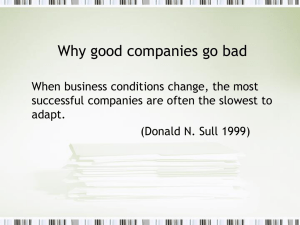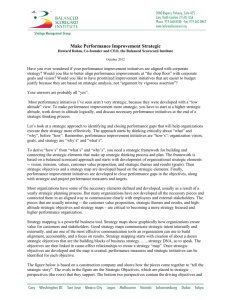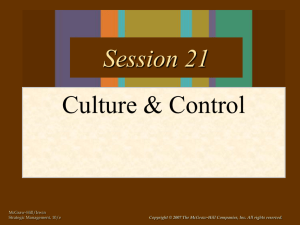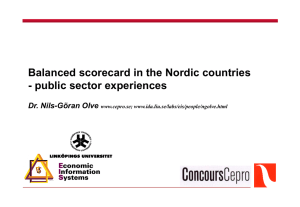The Balanced Scorecard Identified Four Perspectives
advertisement
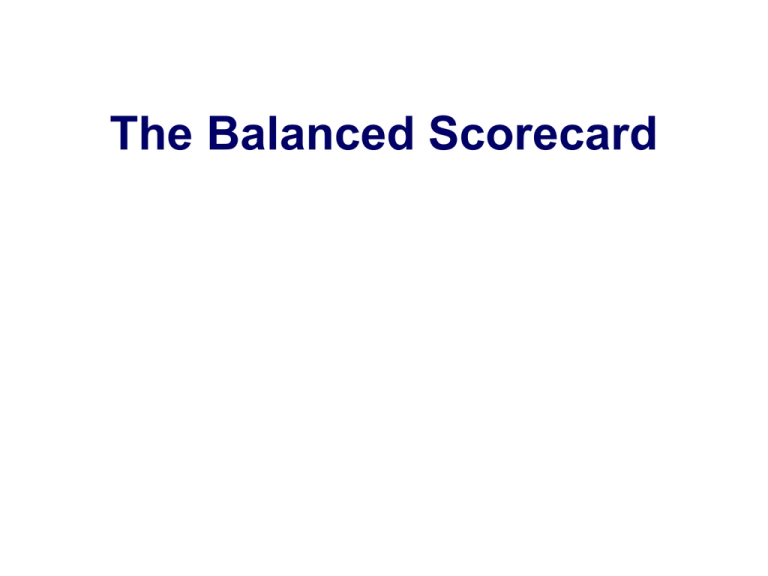
The Balanced Scorecard The Balanced Scorecard • Developed by Robert Kaplan and David Norton. • Introduced in the early 1990s. • Motivated in part by Wall Street’s focus on quarterly earnings. • Widespread adoption (hundreds of companies). Financial Performance Measures • Financial measures are lag indicators: they report on the outcomes of past actions. • Traditional financial measures fail to accurately value intangible assets such as: – Customer relationships – Innovative products and services – Operating processes – Human capital – Information technology systems – Organizational climate The Balanced Scorecard Identified Four Perspectives • • • • Financial Customer Internal business processes Learning and growth The Balanced Scorecard Identified Four Perspectives • Financial – Increase shareholder value • Revenue growth –New markets, products, customers –Additional sales to existing customers • Productivity –Reduce direct and indirect expenses –Utilize assets more efficiently The Balanced Scorecard Identified Four Perspectives • Customer – Operational excellence • Starbucks – Customer intimacy • Exceptional service • Custom products and solutions – Product leadership • Apple The Balanced Scorecard Identified Four Perspectives • Internal business processes – Build the franchise (innovation processes) – Increase customer value (customer management processes) – Operational excellence (operations and logistics) – Good corporate citizenship (regulatory and environmental processes) The Balanced Scorecard Identified Four Perspectives • Learning and growth – Employee capabilities and skills – Technology – Organizational climate Balanced Scorecard “look-alikes” • Stakeholder scorecards – Shareholders – Customers – Employees • Key performance indicator scorecards – a.k.a.: KPI scorecards – A checklist approach • The Difference: Performance Measurement versus Strategic Management The Balanced Scorecard • Step 1: Review the organization’s mission statement. – Why does the organization exist? – What are the organization’s core values? • Step 2: Develop a strategic vision. – What does the organization want to become? – Identify a clear picture of the organization’s overall goal. The Balanced Scorecard • Step 3: Translate the strategy into operational terms. • Step 4: Align the organization to the strategy. – Align across business units – Align across staff functions – Align with outside stakeholders (suppliers, customers, etc.) The Balanced Scorecard • Step 5: Make strategy everyone’s everyday job. – Communication and education – Incentive compensation • Step 6: Make strategy a continual process. – Link strategy to the budgeting process • Step 7: Mobilize leadership for change.


